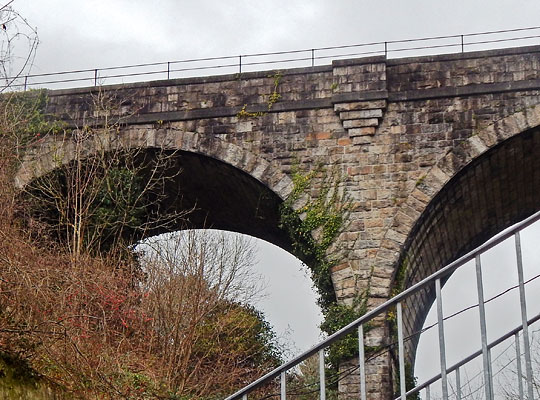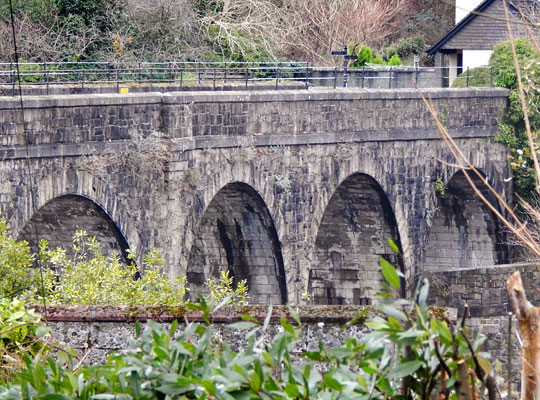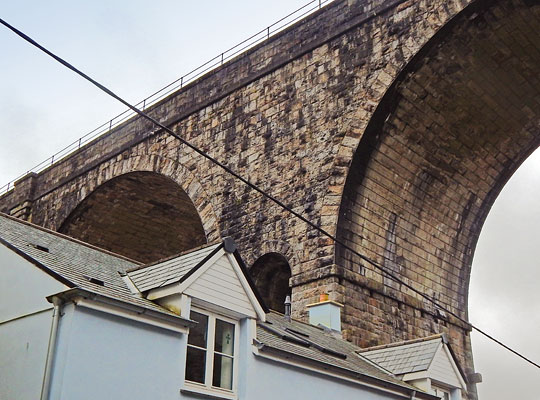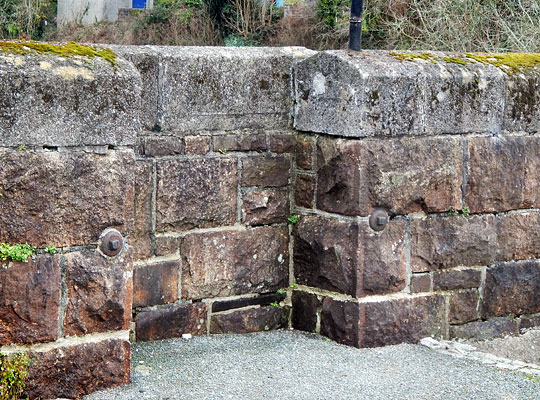Tavistock Viaduct
Tavistock Viaduct






















The ambitious London & South Western Railway (L&SWR) reached Plymouth in 1876 after taking over the Devon & Cornwall’s challenging cross-country route heading eastwards to Lydford where a connection was made with the South Devon Railway (SDR). However the arrangements soon proved unsatisfactory – a function of sharp curves, stiff gradients and the priority given by the SDR to its own services on the single-track branch southwards.
In 1882, Parliament authorised a line from Lydford to Calstock, promoted as the Devon & Cornwall Central Railway (D&CCR). A year later the same company sought powers for an extension from Gunnislake to the Devonport terminus of the L&SWR via Bere Alston. In the same session, the Plymouth Devonport & South Western Junction Railway (PD&SWJR) submitted plans for a line linking Lydford and Devonport via Tavistock and Bere Ferris, as well as several connecting branches, including one to the D&CCR line.
The PD&SWJR bill proved successful, receiving Royal Assent on 25th August 1883. Thus, an independent line was authorised into Plymouth and an agreement was made for the L&SWR to operate it. A year later, another Act approved the acquisition of the D&CCR and abandonment of its Lydford-Calstock line.
Construction of the line presented significant engineering difficulties as a result of the terrain. Three tunnels, seven viaducts and 76 bridges were needed; the stiffest gradient was 1 in 80. Delays were incurred whilst the necessary finance was raised; the first sod was not cut until 29th March 1887. Including land acquisitions, the contract sum was £793,000. James Weeks Szlumper and Messrs Galbraith & Church were appointed as joint engineers, whilst Messrs Relf & Pethick were contracted to deliver the works, employing around 2,000 men across the 22½-mile route.
Szlumper acted as resident engineer for the Tavistock section which included a viaduct through the middle of the town. Crossing King Street, Taylor Square, Drake Road and Quant Park, it comprises eight arches, five spanning 50 feet and three of 30 feet. Throughout, the structure curves slightly to the south; its height is 75 feet. The pier between the third and fourth spans from the west end is thicker than the others and incorporates a tall, narrow archway. The viaduct is built predominantly in stone except for the arch barrels which are formed of concrete blocks.
In September 1889, a temporary railway running across the viaduct gave way resulting in a steam crane, which was travelling along it, toppling over. The shaft of the crane broke as it struck the viaduct’s parapet. Driver John Oliver decided to jump out, sustaining an injury to his foot as he did so.
A memorial date stone was laid by the engineer’s wife, Mary Szlumper, on 12th July 1889, the structure having been decorated specially for the occasion. Major Marindin inspected the railway for the Board of Trade on 23th April 1890, demanding a number of improvements before authorising the introduction of passenger services on 1st June. The first goods traffic had run on 12th May.
A runaway freight train derailed on the viaduct on 17th July 1961, causing severe damage to the Down Main line on the south side of the structure.
Through the 1950s, the emerging convenience of road transport led to a steep decline in traffic on the line and closure came under consideration. Goods services finished in February 1966 and the section between Meldon and Bere Alston closed completely on 6th May 1968. The remainder of the PD&SWJR lines remain operational, with a local passenger service from Plymouth to Gunnislake.
The viaduct received a Grade II listing in December 1983 and has since been reopened as a walkway. Plans to restore the railway from Bere Alston to Tavistock were put forward by Kilbride, a housing developer, in 2008. Whilst the proposal has received widespread support, no substantive progress has yet been achieved. In April 2017, Plymouth City Council announced that a line could be open within five years.







